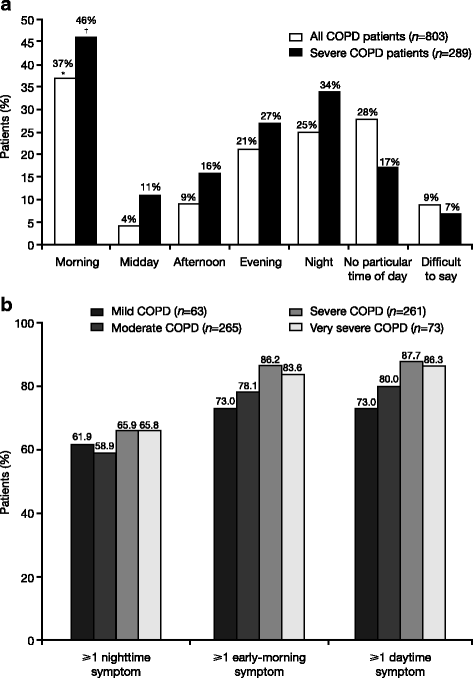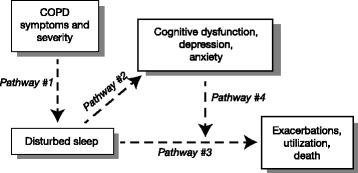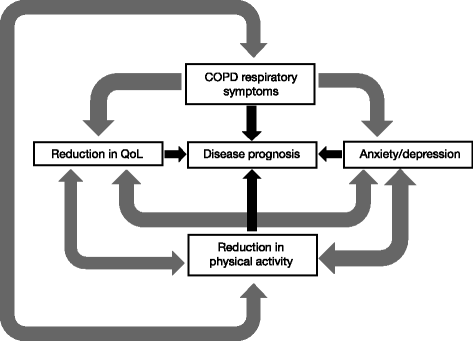Understanding the impact of symptoms on the burden of COPD
- PMID: 28431503
- PMCID: PMC5399825
- DOI: 10.1186/s12931-017-0548-3
Understanding the impact of symptoms on the burden of COPD
Abstract
Chronic obstructive pulmonary disease (COPD) imposes a substantial burden on individuals with the disease, which can include a range of symptoms (breathlessness, cough, sputum production, wheeze, chest tightness) of varying severities. We present an overview of the biomedical literature describing reported relationships between COPD symptoms and disease burden in terms of quality of life, health status, daily activities, physical activity, sleep, comorbid anxiety, and depression, as well as risk of exacerbations and disease prognosis. In addition, the substantial variability of COPD symptoms encountered (morning, daytime, and nighttime) is addressed and their implications for disease burden considered. The findings from this narrative review, which mainly focuses on real-world and observational studies, demonstrate the impact of COPD symptoms on the burden of disease and that improved recognition and understanding of their impact is central to alleviating this burden.
Keywords: Burden; Chronic obstructive pulmonary disease; Patient-reported outcomes; Symptoms; Variability.
Figures



References
-
- Miravitlles M, Worth H, Soler Cataluna JJ, Price D, De Benedetto F, Roche N, et al. Observational study to characterise 24-hour COPD symptoms and their relationship with patient-reported outcomes: results from the ASSESS study. Respir Res. 2014;15:122. doi: 10.1186/s12931-014-0122-1. - DOI - PMC - PubMed
Publication types
MeSH terms
LinkOut - more resources
Full Text Sources
Other Literature Sources
Medical

